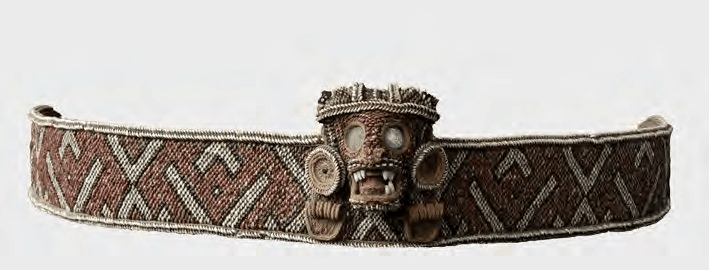Whilst perusing Moreau de Saint–Méry's well-known Description topographique, physique, civile, politique et historique de la partie française de l'isle Saint Domingue online, we decided to list all the areas of modern-day Haiti he mentioned as containing evidence of the island's indigenous inhabitants, usually bones, pottery, petroglyphs, or tools, or ancient bohio grounds. Several of the areas mentioned by the author are well-known, but, alas, Haiti has not received the degree of archaeological excavations one would like. Below are most of the colonial-era parishes and, when possible, towns or regions in which a pre-Columbian past was evident or deduced by Moreau de Saint–Méry. Needless to say, there were likely other sites not mentioned by the author or unknown to him. Some were possibly located in thr general areas where the Spanish-founded towns in western Hispaniola were established (Yaquimo, Lares de Guahaba, Sabana de Salvatierra, La Yaguana, Puerto Real). For example, a cacique whose named included Miraguana was listed in the 1514 Repartimiento, suggesting the area of Miragoane likely had an Indian population. Furthermore, the area of the lakes east of Port-au-Prince and near the border with the Spanish colony probably hosted a large population in precolonial times. Archaeologists in the 20th century have, of course, identified a number of sites such as En Bas Saline (possibly the site of Guacanagaric's capital) and indigenous villages in La Gonave, Île-à-Vache and Fort-Liberté.
Plaisance: Indian hatchets, pots, and an indigenous man's head were found in 1727 by Lovet.
Arcahaye: Was a settlement of the Xaragua cacicazgo.
Les Cayes plain: at Habitation Walsh, Indian ceramics found.
Limbé: Petroglyphs carved into a rock described. Indian "fetishes" also sighted near habitation Chabaud.
Vallières: remains of Indian tools found in mountains, as well as the tomb of a cacique identified in 1787 (said to have "hieroglyphics").
L'Acul: Near the Sacquenville sucrerie Indian tombs described, with "fetishes" and shells.
Aquin: Indian "fetishes" of wood and bones, pots, and shells indicate the presence of a small settlement at Davezac de Castera habitation.
Anse-à-Veau: Caves that seem to have been worked by human hands (ambiguous reference).
Cayes de Jacmel: Peninsula formed by Cascade and La Bioche indicate vestiges of Indian settlements, including tools, cave sites, figures carved out of lambi shell and "fetishes" in the area. Ardouin's geographical work of Haiti also suggests the Spanish worked the mines in this area (iron and copper).
Grand-Goâve: Habitation Charles had Indian-built retrenchment. A Spanish-period settlement here was destroyed in the 1590s.
Jérémie: Human bones from Indians, Indian remains found in caves. Supposedly an ancient Indian sculpture of stone with 4 women carved in it was discovered as Fonds-Rouges.
Gonaives: Cave site with human bones reported.
Port-à-Piment: vestiges of ancient carbet or Indian home found, with human bones.
Bainet: Gris-Gris area has evidence of Indian past, human remains found.
Quartier Morin: Indian bones, tools, and fetishes reported. Habitation Duplaa had more.
Léogâne: Fetishes and human figures reported. The French town was founded in the general vicinity of the earlier La Yaguana town of the Spanish colonial period, itself built after the depopulation of Santa Maria de la Vera Paz, the colonial town founded after the destruction of the Xaragua cacicazgo by Ovando.
Dondon: Voûte-à-Minguet described in detail, site important to indigenous residents.
Petite-Anse: hatchets, Indian "fetishes" found at Bonnet à l'Evêque. Moreau de Saint–Méry believed Guacanagaric's capital was at the site of the town.
Limonade: Indian tools commonly found.
Borgne: Caverns and gorges with human bones, phalluses, vessels and "fetishes" reported. Cave site in area visited by Arthaud in 1777, who took a black cup from the cave site.
Cavaillon: Morne Bleu cave had "fetishes" from Indian period.
Tiburon: "Fetishes" and caverns with human bones reported in the area.
Saint-Marc: In c.1737, Indian "idols" and tools were found at a plantation at Bas de l'Artibonite.
Port-Salut: "Fetishes" found in the area, as well as other indigenous artifacts.

No comments:
Post a Comment